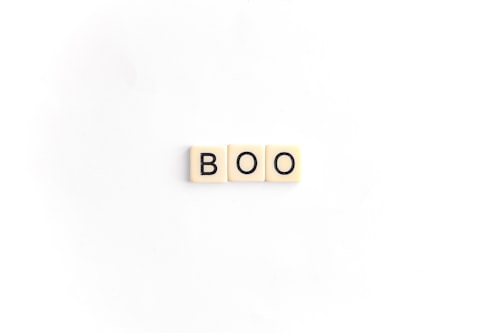What will spike higher than your blood sugar this Halloween? The price of candy and the cost of celebrating. According to the National Retail Federation, the 13% inflation on candy prices is the highest the US has ever seen. (Watts, 2022) Does this mean trick-or-treaters are about to get tricked with a smaller haul than years past?
One of the most traditional vessels for candy-collecting is the pillow case, which will hold over 1,600 pieces of candy. (Perino, 2019) Holding a smaller, but more stylish haul is the McDonald’s Boo Buckets, which debuted in 1986 and just made a return by popular demand after a 6-year hiatus. (Cooper, 2022) Now with candy prices soaring, the hoard of candy that kids are expecting this year might be just a handful.
Despite the cost hike on candy, costumes, and decor, Americans are ready to spend a record $10.6B on Halloween this year - the most the US has ever spent. (Watts, 2022) Several factors play a key role in the inflation of candy and our record spending, which give clues that the demand for candy might fall short not only this Halloween, but for the entire 2022 holiday season.
From Boo! to Boooo…
Surveys seem to indicate that the damage done to social lives during the pandemic has fueled the desire to get out and participate in 2022’s Halloween festivities. In a recent poll by the National Confectioners Association, about 75% of younger parents agree that Halloween is an important event this year. (Nowak, 2022)
Unsurprisingly, Halloween participation dropped significantly during the height of the COVID-19 pandemic. This year, the National Retail Federation reports 69% of Americans will be celebrating, which is the highest participation since 2017. (Watts, 2022) With so many planning to take part, there may be a shortage of treats.
Lending to the increased cost of sweets this Halloween is the increased cost of raw materials. Sugar, cocoa, peanuts, corn syrup, and palm oil have all been affected by poor crop conditions and supply chain issues. Nestle indicated that the cost of raw materials, packaging, transportation, and logistics have been higher in 2022 than last year. Raw materials alone were reported to have a 10% increase. (Shih, 2022)
Another disruption and expense for candy makers has been the ongoing war in Ukraine. Raw materials are challenging to secure, transportation is slow, and many food manufacturing locations in Ukraine, like Nestle, are closed indefinitely. (Whitley & Bloomberg, 2022)
For candy manufacturers like The Hershey Company, it’s been difficult to meet expectations. Hershey predicts it will not meet demand for 2022’s Halloween season. To mitigate losses, Hershey, Nestle, and Mars have all increased candy prices by as much as 14%. It’s not just a price increase, but the product itself is getting smaller in many cases. To cut manufacturing expenses, some fun size treats are smaller, thinner, or lighter than last year. (Rumpf, 2022)
It put a Spell on US
Handing out candy to trick-or-treaters has been a tradition for decades in the US, but it hasn’t always been this way. A little less than a century ago, Halloween was quite different from the costumes and sweets we see today. Before the 1930s, October 31st was an evening of pranks from juvenile males. This ritual spread slowly from the rural towns of America to the cities where pranks became more involved, causing expensive damages to property.
In an effort to eliminate the pranksters and placate teens, cities began to bribe good behavior from youngsters by offering sweets and parties on Halloween. Children took to dressing in costume and visiting neighbors for a “trick or treat” and the celebration we know began to take shape. American housewives and homemakers were getting tired of spending a whole day baking and making sweet treats for Halloween and the candy companies realized this. By the 1950s, ads for Halloween candy were appearing in national magazines. (Baker, 2021)
Today, Halloween is a festivity that a majority of Americans participate in, and they spend massive amounts of money to do it. About 160 million Americans will buy candy to hand out and scoff down. Over 600 million pounds of candy is sold for Halloween, for about $2.6B. The average household typically spends around $100 for Halloween candy.
Halloween candy is a good start, but to get their spooky on, Americans spend significantly on costumes, décor, and parties. Between costumes for children, adults, and pets, Americans will spend about $3.6B. Nearly the same amount is spent on Halloween decorations. (Perino, 2019, Watson, 2021, Watts, 2022)
You may have seen the popular 12-foot skeleton figures looming on front lawns. Sometimes these are werewolves or mummies, but whichever monster Americans want imposing on their yards, they can be purchased through stores like Lowe’s and Home Depot for about $350 each. These are popular items, however, and Home Depot reports sellouts on each stock coming in, even as early as July. (Molina, 2022)
Is the candy shortage a Nightmare before Christmas?
Record numbers of Americans will be celebrating this year and many parents think it’s an important social event to take kids trick-or-treating and host parties for Halloween 2022.
Because of disruptions in the supply chain, candy manufacturers like The Hershey Company report a shortage of candy for all 2022 holidays from Halloween to New Year’s Eve. (Rumpf, 2022) The candy that does make it to the shelves may be smaller, thinner, and lighter than Americans remember from last year.
Despite inflation, it seems many Americans are willing to pay the extra money this year for something scary sweet.

